The Gist
-
Smarter customer service. Agentic AI handles complex support tasks, predicts issues and personalizes every interaction in real time.
-
Hard questions ahead. AI-driven CX raises tough issues around ethics, integration, privacy and workforce impact that leaders can’t ignore.
-
Adoption looks different. What works in one region may not work in another. Culture, regulation and budget shape how AI is deployed globally.
The rapid evolution of artificial intelligence (AI) has ushered in a new era for customer experience (CX), with agentic AI emerging as a major development. Unlike traditional AI systems that rely on predefined rules or reactive responses, agentic AI is autonomous, goal-oriented and capable of reasoning, planning and executing complex tasks with minimal human intervention.
By integrating advanced machine learning (ML), natural language processing (NLP) and real-time analytics, agentic AI systems perceive their environment, adapt to dynamic conditions and deliver personalized, proactive solutions.
This paradigm shift is redefining how businesses in industries like retail, finance, healthcare and telecommunications engage with customers, and it’s helping companies move beyond automation to intelligent, human-like interactions.
Agentic AI’s impact on CX is significant, and it allows businesses to anticipate customer needs, resolve issues before they escalate and create seamless experiences that build loyalty and drive revenue. However, deploying these systems is not without challenges, including ethical concerns, data privacy, integration complexities and workforce implications.
This article explores 10 key ways in which agentic AI enhances customer experience, identifies leading companies and examines global examples from high-tech firms around the world. It also outlines a step-by-step guide for implementing agentic AI in your company. It addresses persistent challenges and provides real-world examples from market leaders.
Drawing on insights from reliable sources, this article offers a comprehensive view of agentic AI’s transformative potential and the strategic considerations for its adoption.
Table of Contents
10 Ways Agentic AI Enhances Customer Experience
Personalized Customer Interactions
Agentic AI uses customer data (i.e., preferences, purchase history, behavior) to deliver highly tailored recommendations and solutions, which enhances satisfaction and engagement. Integrate AI agents with customer relationship management (CRM) systems and real-time data platforms to process insights and act instantly. Use large language models (LLMs) for context-aware personalization.
Companies that offer robust solutions include Salesforce (Agentforce for personalized CX), Adobe (Experience Platform for real-time personalization) and Zendesk (AI-powered ticketing for tailored support).
Proactive Issue Resolution
AI agents predict and address potential issues, such as network disruptions or delivery delays, before customers are impacted. This helps reduce frustration and build trust. Deploy predictive analytics and monitoring tools to allow AI to trigger interventions like automated alerts or fixes. Integrate with operational systems for seamless execution.
Companies that lead in this space include Zoom (Virtual Agent for proactive support), Genesys (Cloud CX for predictive engagement) and ServiceNow (AI-driven service management).
Seamless Omnichannel Support
Agentic AI maintains consistent, cohesive experiences across multiple channels (i.e., web, mobile, voice, social media), and it eliminates silos and enhances accessibility. Implement AI agents with NLP and API integrations to unify customer touchpoints and maintain context across interactions.
Companies that excel in this area include Sprinklr (AI-powered omnichannel platform), NICE (CXone for unified CX) and Microsoft (Dynamics 365 for omnichannel engagement).
Autonomous Task Execution
AI agents independently handle complex, multi-step tasks, such as booking services, processing claims or managing returns, which frees human agents for strategic work. Design workflows with reasoning engines and built-in guardrails to maintain compliance and accuracy. Test with pilot projects to refine performance.
Companies that are key players here include UiPath (agentic automation for enterprise tasks), IBM (Watson Orchestrate for autonomous workflows and Automation Anywhere (AI-driven process automation).
Emotional Intelligence in Interactions
Agentic AI analyzes customer sentiment and tone during interactions. This allows empathetic responses that strengthen relationships and improve CX. Integrate sentiment analysis and emotion detection into contact center platforms, and train AI with diverse datasets for nuanced understanding.
Companies that offer advanced solutions include Zoom (AI Companion for sentiment analysis), Pega Systems (Customer Decision Hub) and Affectiva (emotion AI for CX).
Dynamic Workflow Optimization
AI optimizes operational workflows, such as call routing or inventory management, to enhance CX efficiency and reduce wait times. Deploy AI with real-time data streaming platforms (i.e., Apache Kafka) to adapt workflows dynamically based on demand or customer needs.
Companies that provide cutting edge tools include Confluent (data streaming for AI), SAP (HANA for workflow optimization) and Oracle (Fusion Cloud for process automation).
Enhanced Self-Service Options
AI-powered chatbots and virtual assistants resolve queries instantly. They offer 24/7 support and reduce dependency on human agents. Use LLMs and knowledge bases to allow natural, context-aware responses. Continuously update AI with customer feedback to improve accuracy.
Companies that lead in self-service solutions include Google (Dialogflow for conversational AI), Amazon (Lex for self-service bots) and Intercom (AI-driven customer support).
Predictive Analytics for Upselling
AI identifies upselling and cross-selling opportunities by analyzing customer behavior. It helps increase revenue while enhancing relevance for customers. Integrate predictive models with ecommerce or CRM platforms to recommend products or services aligned with customer needs.
Companies that offer powerful tools include Tableau (CRM Analytics for predictive insights), SAS (Customer Intelligence for upselling) and HubSpot (AI-driven marketing automation).
Streamlined Claims and Returns Processing
Agentic AI automates claims or returns processes, which reduces processing time, minimizes errors and improves CSAT. Implement AI agents with document processing, decision-making capabilities and integration with backend systems for end-to-end automation.
Companies that are leaders here include Cognizant (Multi-Agent Services for claims automation), HCLTech (AI-driven process optimization) and Accenture (AI-powered automation).
Brand-Aligned AI Interactions
AI agents act as brand ambassadors. They reflect a company’s values, tone and identity in every customer interaction, and they reinforce brand loyalty. Customize AI with brand-specific training data and governance frameworks to maintain consistency and alignment with brand ethos.
Companies that specialize in this area include Amdocs (AI-driven CX for brand alignment), Lithium (community platforms for brand engagement), and Software AG (ARIS for process governance).
Related Article: Your Brand Has a Voice: Does Your AI?
Example: Salesforce’s Agentforce in Action
Salesforce’s Agentforce, a flagship agentic AI platform, demonstrates the power of AI in transforming CX. Agentforce can automate customer inquiries, predict inventory shortages and deliver personalized promotions. By integrating with Salesforce’s CRM, it analyzes customer data in real time, reduces response times and increases customer satisfaction, according to Salesforce.
Challenges in Implementing Agentic AI
While agentic AI offers immense potential, several challenges persist. Data privacy and security remain top concerns, as autonomous systems handling sensitive customer data face risks of breaches or misuse. They require robust encryption and compliance with regulations like GDPR or CCPA. Ethical concerns also arise, including the risk of misaligned AI goals or biases in decision-making that can erode customer trust. This necessitates transparent governance and ethical frameworks.
Integration with existing systems poses another hurdle. Legacy systems, common in many enterprises, hinder seamless AI deployment, particularly for small and medium-sized enterprises (SMEs) with limited budgets. Meanwhile, the “black box” nature of AI decision-making adds another layer of complexity. It makes it difficult to maintain accountability, especially in high-stakes industries like finance or healthcare.
Additionally, the automation of routine tasks raises concerns about job displacement, underscoring the importance of investing in workforce reskilling. Finally, the significant upfront costs associated with infrastructure, training and maintenance can deter adoption, particularly in smaller firms.
Related Article: The Self-Service BI Bottleneck Is Back. Can Agentic AI Fix It?
Why Agentic AI Looks Different Around the World
Editor’s note: A look at how agentic AI is evolving across different countries, with contributions, challenges and unique adoption patterns.
| Country | Contribution | Challenge |
|---|---|---|
| Japan | Softbank uses its AI-powered robot, Pepper, to enhance the retail experience. Pepper uses agentic AI to engage customers in stores, and it offers personalized product suggestions and answers queries. | Cultural preferences for human interaction in Japan limit AI adoption in traditional sectors, so it requires careful change management. |
| South Korea | Samsung integrates agentic AI into its SmartThings ecosystem and allows proactive management of connected home devices (i.e., predicting maintenance needs for appliances). | Intense competition and rapid innovation cycles in South Korea strain R&D budgets, which complicates long-term AI investments. |
| Germany | SAP uses its HANA platform to power agentic AI for supply chain and CX optimization, and it supports firms like BMW in streamlining customer interactions. | Stringent EU regulations, such as the AI Act, demand rigorous compliance, which increases development and operational costs. |
| France | Atos develops AI agents for financial services and automates fraud detection and customer onboarding processes. | A limited AI talent pool in France hinders scaling efforts, necessitating reliance on global partnerships. |
| United States | NVIDIA provides Blueprints for agentic AI and allows companies like AT&T to automate customer service workflows, such as call routing and issue resolution. | Market saturation and high expectations for rapid ROI pressure firms to deploy AI solutions quickly, which risks incomplete implementations. |
| Israel | Mobileye, known for autonomous driving technology, applies agentic AI to customer-facing analytics, and it predicts vehicle service needs to enhance driver experiences. | Geopolitical instability in the region disrupts global partnerships and supply chains, which impacts AI deployment. |
These examples illustrate agentic AI’s global reach and its ability to address industry-specific CX needs. However, regulatory hurdles, cultural resistance, talent shortages and economic constraints remain significant barriers. Agentic AI requires tailored strategies for successful adoption.
How to Bring Agentic AI Into Your Business
To successfully deploy agentic AI for CX enhancement, follow this structured approach.
Assess Needs and Goals
Identify specific CX pain points (i.e., slow response times, inconsistent personalization) and define measurable objectives, such as reducing resolution times by 20%.
Evaluate Data Infrastructure
Maintain access to high-quality, real-time data through platforms like Apache Kafka, Snowflake or Confluent to support AI decision-making.
Select a Platform
Choose a provider (i.e., Salesforce Agentforce, IBM Watson, UiPath) based on industry needs, scalability and integration capabilities.
Pilot a Use Case
Start with a single application, such as automating customer inquiries or optimizing call routing, to test efficacy and gather insights.
Train AI Agents
Customize AI with brand-specific data to align responses with company values and tone. Use diverse datasets to enhance accuracy.
Integrate with Systems
Connect AI to existing CRM, ERP and contact center platforms via APIs to allow seamless workflows and data flow.
Implement Guardrails
Establish ethical guidelines, compliance checks and audit trails to mitigate risks and maintain transparency.
Monitor and Optimize
Use analytics to track performance metrics (i.e., resolution time, customer satisfaction) and refine AI behavior based on feedback.
Scale Gradually
Expand to additional use cases, such as predictive analytics or claims processing, after validating ROI and addressing initial challenges.
Upskill Workforce
Train employees to collaborate with AI. Focus on creative and strategic roles to complement automation and maintain engagement.
The Promise and the Pressure of Agentic AI
Agentic AI is changing customer experience by delivering personalized, proactive and efficient interactions that drive loyalty, satisfaction and revenue growth. Through ten key applications, businesses can transform CX using solutions from industry leaders like Salesforce, SAP, NVIDIA, Zoom and others.
However, challenges such as data privacy, ethical concerns, integration complexities and workforce implications require careful navigation to support responsible adoption. Global examples from high-tech firms around the world highlight both the transformative potential and context-specific hurdles of agentic AI. These hurdles include regulatory compliance, cultural resistance and resource constraints.
By following a structured implementation program, companies can use agentic AI to address CX pain points, optimize operations and stay competitive. As agentic AI continues to advance, balancing innovation with ethical governance and workforce alignment will be critical to realizing its full potential.
Learn how you can join our contributor community.






